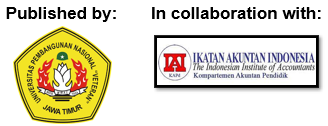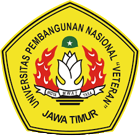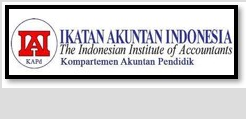Government Strategy in Addressing the Impact of Economic Growth and Energy Consumption on Environmental Degradation
DOI:
https://doi.org/10.33005/jasf.v6i2.495Keywords:
economic growth, energy consumption, environmental degradation, government strategyAbstract
The report discusses the serious environmental issues Indonesia's growing economy and rising energy use have brought about. In addition to examining government initiatives to lessen these impacts through sustainable development regulations, the goals include evaluating the connection between economic indicators and environmental results. The research employs a mixed-approaches strategy, combining quantitative and qualitative methods. The quantitative analysis, which employs time series data from 1991 to 2020, focuses on carbon dioxide emissions per capita as the dependent variable and GDP and energy consumption per capita as independent variables. Multiple linear regression using Ordinary Least Squares (OLS) evaluates these correlations. A thorough grasp of the relationship between economic growth, energy consumption, and environmental deterioration is provided by qualitative analysis, which entails a review of the literature to investigate government initiatives addressing environmental concerns. The study results show a substantial positive correlation between Indonesia's carbon dioxide (CO₂) emissions, energy consumption, and economic development. The analysis indicates that the ongoing economic activities driven by fossil fuel consumption will exacerbate environmental degradation without significant intervention, necessitating effective government policies for sustainable development and emission reduction. The study concludes that economic growth and energy consumption significantly contribute to Indonesia's environmental degradation, particularly through increased carbon dioxide (CO₂) emissions. It recommends that the government strengthen policies promoting sustainable energy use, increase investment in renewable energy technologies, and implement stricter regulations on industrial emissions. Additionally, fostering public awareness and education on environmental sustainability is crucial for effective long-term solutions.
Downloads
References
Ahimsaning Gandhi, K., Cornelis Seba, R. O., & Hadiwijoyo, S. S. (2024). Implementation of the Paris Agreement in Handling Climate Change Due to Forest Fires in Indonesia 2015-2019. Jurnal Impresi Indonesia, 3(2), 145–154. https://doi.org/10.58344/jii.v3i2.4628.
Alfiansyah, H., Ardikoesoema, N., & Samuel, J. (2023). Potensi degradasi lingkungan dampak eksistensi karbofuran di Indonesia. Jurnal Bisnis Kehutanan dan Lingkungan, 1(1), 66–87. https://doi.org/10.61511/jbkl.v1i1.2023.258.
Arifin, K. K., Muhammad, E., Ramadahan, R., & Ruslan, B. (2023). Pengaruh Pertumbuhan Ekonomi Terhadap Emisi Co 2 Di Indonesia. Jurnal Pendidikan Ekonomi, 17(Vol 17 No 1 (2023): APRIL 2023), 119–127. https://doi.org/10.19184/jpe.v17i1.39072.
Buchanan, J. M., & Stubblebine, W. C. (1962). Externality. Classic Papers in Natural Resource Economics, 138–154. https://link.springer.com/chapter/10.1057/9780230523210_7.
Creswell, J. W., & Plano, C. V. L. (2018). Research Design Pendekatan Kualitatif, Kuantitatif, dan Mixed. SAGE Publications.
Ekins, P., Gupta, J., & Boileau, P. (2022). Global Environment Outlook GEO-6: Summary for Policymakers. https://assets.cambridge.org/97811087/07664/frontmatter/9781108707664_frontmatter.pdf.
Elfaki, K. E., & Heriqbaldi, U. (2023). Analyzing the Moderating Role of Industrialization on the Environmental Kuznets Curve (EKC) in Indonesia: What Are the Contributions of Financial Development, Energy Consumption, and Economic Growth? Sustainability (Switzerland), 15(5). https://doi.org/10.3390/su15054270.
Fatmawati, P. N., Jaelani, A., & Rokhlinasari, S. (2022). Analysis of Factors Affecting Employee Performance. American Journal of Current Education and Humanities, 1(01), 44–63. https://aepub.com/articles/.
Gessesse, A. T., & He, G. (2020). Analysis of carbon dioxide emissions, energy consumption, and economic growth in China. Agricultural Economics (Czech Republic), 66(4), 183–192. https://doi.org/10.17221/258/2019-AGRICECON.
Ghozali, A. (2018). Aplikasi Analisis Multivariate Dengan Program IBM SPSS. Semarang: Badan Penerbit Universitas Diponegoro.
Grossman, G. M., & Krueger, A. B. (1991). Environmental impacts of a North American free trade agreement. NBER Working Papers Series, 3914.
Indonesia Green Growth Program. (2021). Updated NDC Indonesia untuk Masa Depan yang Tangguh Iklim. BAPPENAS. http://greengrowth.bappenas.go.id/updated-ndc-indonesia-untuk-masa-depan-yang-tangguh-iklim/.
IPCC. (2022). Climate Change 2022_ Impacts, Adaptation and Vulnerability_Working Group II contribution to the Sixth Assessment Report of the Intergovernmental Panel on Climate Change. Working Group II Contribution to the Sixth Assessment Report of the Intergovernmental Panel on Climate Change, August, 37. https://doi.org/10.1017/9781009325844.Front.
Judijanto, L., Mayasari, N., & Sitompul, G. A. (2024). Dampak Regulasi Ekonomi Hijau dan Penggunaan Teknologi Energi Terbarukan terhadap Efisiensi Energi Listrik di Indonesia. JMWS – Journal Multidisiplin West Science, 03(10), 1740–1749. https://doi.org/10.58812/jmws.v3i10.1673.
Kementerian Energi dan Sumber Daya Mineral. (2019). Inventarisasi Emisi GRK Sektor Energi. In Pusat Data dan Teknologi Informasi Energi dan Sumber Daya Mineral Kementerian Energi dan Sumber Daya Mineral. https://www.scribd.com/document/610944339/Content-Inventarisasi-Emisi-Gas-Rumah-Kaca-Sektor-Energi-Tahun-2019.
KLHK. (2021). PPID | Kementrian Lingkungan Hidup dan Kehutanan | Ketahanan Iklim, SDGs dan NDC. https://ppid.menlhk.go.id/berita/siaran-pers/5839/ketahanan-iklim-sdgs-dan-ndc.
KLHK RI. (2022). Status Hutan & Kehutanan Indonesia 2022 Menuju FOLU Net Sink 2030. Laporan Kinerja Kementrian Lingkungan Hidup dan Kehutanan, 53(9), 1689–1699. https://statistik.menlhk.go.id/sisklhkX/assets/publikasi/file/00_FULL_SoIFo%202022%20B5_IDN_31.08.23_opt.pdf.
Kusuma, D. A., & Wicaksono, A. D. P. (2023). Analisis Klastering Dampak Lingkungan Berdasarkan Konsumsi Energi Perusahaan Berbasis Industri 4.0 Menggunakan Metode Crisp-Dm. POSITIF : Jurnal Sistem dan Teknologi Informasi, 9(2), 130–135. https://doi.org/10.31961/positif.v9i2.2050.
Kusumawardani, D., & Dewi, A. K. (2020). The effect of income inequality on carbon dioxide emissions: A case study of Indonesia. Heliyon, 6(8), 0–7. https://doi.org/10.1016/j.heliyon.2020.e04772
Latif, M. F. A., Wafa, S. N., & Alia, S. (2023). Analisis Kebijakan Blue Economy di Indonesia. Jurnal Perpajakan dan Keuangan Publik, 2(2), 95–106. https://doi.org/10.15575/jpkp.v2i2.38412.
Masdar, R., Husna, Jurana, Amborowatie, R., Meldawaty, L., Tenripada, Mursali, M. I., & Naida, N. (2022). Implementation of a Sustainable green economy in Indonesia: A Literature Review. IOP Conference Series: Earth and Environmental Science, 1075(1), 0–8. https://doi.org/10.1088/1755-1315/1075/1/012056.
Muhammad, B. (2019). Energy consumption, CO2 emissions, and economic growth in developed, emerging, and Middle East and North Africa countries. Energy, 179, 232–245. https://doi.org/10.1016/j.energy.2019.03.126.
Paino, C. (2024). Hari Lingkungan Hidup 2024: Degradasi Lahan Membuat Kehidupan Masyarakat Dunia Terancam - Forest Watch Indonesia. https://fwi.or.id/hari-lingkungan-hidup-2024-degradasi-lahan/.
Paramati, S. R., Apergis, N., & Ummalla, M. (2018). Dynamics of renewable energy consumption and economic activities across the agriculture, industry, and service sectors: evidence in the perspective of sustainable development. Environmental Science and Pollution Research, 25(2), 1375–1387. https://doi.org/10.1007/s11356-017-0552-7.
Pratiwi, D. (2021). Analisis Hubungan Kausalitas Pertumbuhan Ekonomi, Konsumsi Energi, dan Emisi CO2 di Indonesia Pada Periode 1980-2019. Jurnal Budget, 6(1), 17–35. https://pa3kn.dpr.go.id/produk/detail-jurnal-budget/id/12.
Safriwan, S., & Idris, I. (2021). Pengaruh Globalisasi Kepadatan Penduduk dan Pertumbuhan Ekonomi terhadap Degradasi Lingkungan di Indonesia. Jurnal Kajian Ekonomi Dan Pembangunan, 3(1), 57. https://doi.org/10.24036/jkep.v3i1.13519.
Salari, M., Javid, R. J., & Noghanibehambari, H. (2021). The nexus between CO2 emissions, energy consumption, and economic growth in the U.S. Economic Analysis and Policy, 69, 182–194. https://doi.org/10.1016/j.eap.2020.12.007.
Saleh, G. R. ., & Suryaningrum, D. H. (2023). The Moderating Effect of Goodwill and Goodwill Impairment on Global Energy Crisis and Corporate Cash Holding. JASF: Journal of Accounting and Strategic Finance, 5(2), 331–350. https://doi.org/10.33005/jasf.v5i2.338
Saputra, K. A. K., Dharmawan, N. A. S., Kawisana, P. G. W. P., & Larasdiputra, G. D. (2023). Potential Carbon Tax in Indonesia: A Literature Review. International Journal of Environmental, Sustainability, and Social Science, 4(6), 1670–1677. https://doi.org/10.38142/ijesss.v4i6.891.
Shahbaz, M., Bhattacharya, M., & Ahmed, K. (2015). Growth-Globalisation-Emissions Nexus: The Role of Population in Australia. Monash Business School, May, 1–32. https://doi.org/10.13140/RG.2.1.3091.8565.
Soeharjoto, S., Salma, N. I., Tribudhi, D. A., & Masyhudi, L. (2022). Economic Growth and Carbon Emissions in Asean-6 to Achieve Sustainable Development Goals through Kuznet Curve Environmental Analysis Approach. Jurnal Manajemen Industri dan Logistik, 6(1), 10–20. https://doi.org/10.30988/jmil.v6i1.972.
Suarga, E., Dwitiyasih, T., Damayanti, H., & Arifin, S. (2024). Meninjau Keadaan Ekonomi Hijau Indonesia: Bagaimana seharusnya strategi kita melangkah ke depan? https://wri-indonesia.org/id/wawasan/meninjau-keadaan-ekonomi-hijau-indonesia-bagaimana-seharusnya-strategi-kita-melangkah-ke-0.
Tong, T., Ortiz, J., Xu, C., & Li, F. (2020). Economic growth, energy consumption, and carbon dioxide emissions in the E7 countries: A bootstrap ARDL bound test. Energy, Sustainability and Society, 10(1), 1–17. https://doi.org/10.1186/s13705-020-00253-6.
UNEP. (2018). Towards a Green Economy Pathways to Sustainable Development and Poverty Eradication. UNEP - UN Environment Programme. UNEP. https://www.unep.org/resources/report/towards-green-economy-pathways-sustainable-development-and-poverty-eradication-10.
UNFCCC. (2022). United Nations Climate Change, 2022. In Unfccc.
United Nations. (2015). Transforming our World: The 2030 Agenda for Sustainable Development, Department of Economic and Social Affairs. United Nations. https://sdgs.un.org/publications/transforming-our-world-2030-agenda-sustainable-development-17981.
Wahyuddin, Y. A., Hidayat, R. M., & Verdiansyah, T. R. (2022). Strategi Kebijakan Blue Economy Indonesia dalam Mendukung Pembangunan Berkelanjutan pada Era Joko Widodo. Sriwijaya Journal of International Relations, 2(2), 70-87. https://doi.org/10.47753/sjir.v2i2.49.
Widarjono, A. (2018). Ekonometrika: Pengantar dan Aplikasinya, Edisi Keempat. UPP STIM YKPN.
World Development Indicators (2020). World Development Indicators, The World Bank. (2020). World Bank. https://wdi.worldbank.org/table.
World Energy Outlook (2022). World Energy Outlook – Analysis - IEA. Retrieved December 24, 2023, from https://www.iea.org/reports/world-energy-outlook-2022.
Zhang, J. (2021). Environmental Kuznets Curve Hypothesis on CO2 Emissions: Evidence for China. Journal of Risk and Financial Management, 14(3). https://doi.org/10.3390/jrfm14030093.














